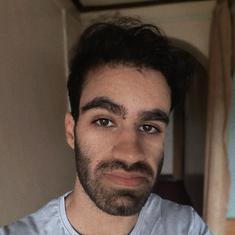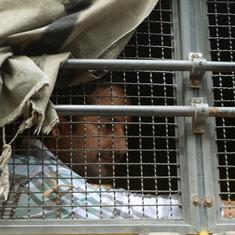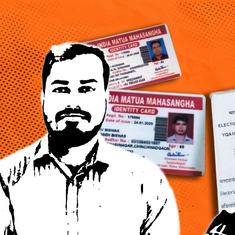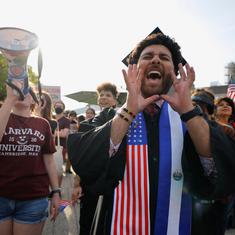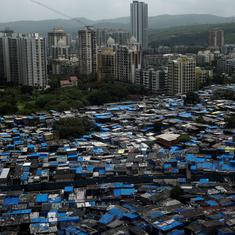But unlike the two incidents in the past week, few incidents of moral policing make it to the national press at all.
On December 19, 2014, three incidents were reported in the local press in coastal Karnataka. The first took place in Vittal, a village in Bantwal district, about an hour’s drive away from Mangalore city. A group of students issued a warning to a boy talking to a girl from a different community on a college campus. The news reports didn’t specify backgrounds of the students, the boy or the girl. When the boy objected to the interference, the group assaulted him and the altercation ended only after the police arrived and resorted to lathi-charge.
The second incident occurred in Puttur where hundreds of thugs gathered outside a cinema hall after an autorickshaw driver reported to them that he saw a burqa-clad girl there with a Hindu boy. Secular activists arrived at the scene soon after. Both groups were once again dispersed after a police lathi-charge.
The third record of communal tension was also from Puttur. A 35-year-old woman was killed in a road accident. She was a Hindu and the driver of the Maruti Omni that hit her was a Muslim. A crowd of people attacked the driver who had to be rescued by the police. Later, more than a hundred Hindutva activists surrounded the police station shouting slogans.
The events of that day were recorded in regional papers but escaped national attention. There were no chilling videos of someone being stripped and beaten, which is what happened to a 28-year-old Muslim man in Mangalore’s Attavara neighbourhood. Neither was there a viral WhatsApp image of tomfoolery between Muslim boys and girls in a college classroom – an image that triggered an attack on 19-year-old Riyaz by a Hindu gang. We didn’t see visuals like those of women being beaten in the brutal Mangalore pub attack, or of boys and girls being slapped in the infamous homestay case.
Governmental apathy
Incidents of moral policing along religious lines in Dakshin Kannada might hit national consciousness every few months but they occur every other week and sometimes within days of each other. Cameras or no cameras, moral policing is routine in this region.
Activist Suresh Bhat Bakrabail with the Karnataka Komu Souharda Vedike (Karnataka Forum for Communal Harmony) compiles a comprehensive list of communal incidents in the district every year based on reports in regional papers like Karavvali Ale and Vartha Bharathi as well as in national newspapers. He sorts them into groups – moral policing by Hindu vigilantes, moral policing by Muslim vigilantes, cattle vigilantism, hate speech and other incidents. In 2014, Bakrabail found 173 incidents of communal disharmony. Hindu thugs led attacks in 39 cases of moral policing and Muslim goons did the same on 14 occasions. The trend continues into 2015.
Moral policing in Mangalore manifests as the same kind of bullying over and over again. On September 16, 2009, a group of five college students were travelling on a private bus to go to a state handball tournament in Hassan. They were three Muslim boys and two Hindu girls. A person on the bus questioned them and a short while later the bus was stopped by a large group of Hindutva activists who pulled the students out. They attacked the boys with iron rods, knives and clubs and slapped the girls. In March this year, a few weeks after the attack on Riyaz, a group of Bajrang Dal activists stopped students from travelling to Bengaluru on a study tour because there were Muslim boys on the trip.
People continue to be attacked on roads and beaches, in colleges and hotels in and around Mangalore, sometimes for marrying outside their communities, sometimes for just speaking to another person at a bus stop. Secular activists say that no matter which government is in power in the state, there has been no serious effort to control this religious vigilantism. Many young men and women, meanwhile, have left or are waiting to leave the area and put the fear of being assaulted for being sociable behind them.

